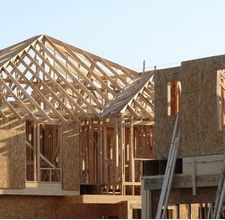
The construction sector has endured a tough start to the year according to the latest figures from the Ulster Bank construction purchasing managers' index.
The latest figures in the index fell to 45.8 in February from 46.4 in January to stand at its lowest level since last October. Any figure over 50 signals growth in a sector, while a figure under 50 signals contraction.
The bank said that the latest decline represented a turnaround from the broad stabilisation recorded in December and it noted that the decrease in activity was ''marked''.
The index looks at three sectors - civil engineering, housing and commercial. It reveals that the rate of contraction in housing activity quickened sharply last month. Commercial activity fell at a marginal pace, but civil engineering remained the worst performing sector with activity falling at the fastest place since June 2011.
Companies in the construction sector said that new orders fell for the second month in a row and at the fastest pace since last June. Employment levels also fell again in February, although the rate of job cuts was much weaker than seen in January and the decline was the weakest in over four years.
Higher raw material and fuel prices also led to a further increase in input costs, with the rate of inflation speeding up for the second month in a row.







